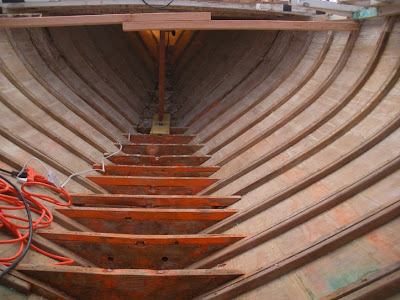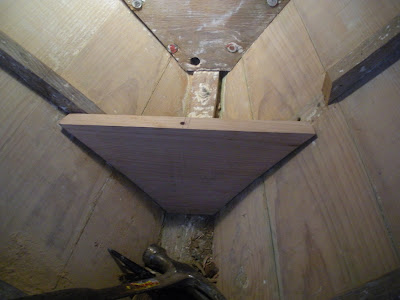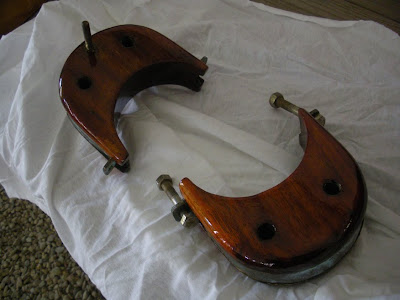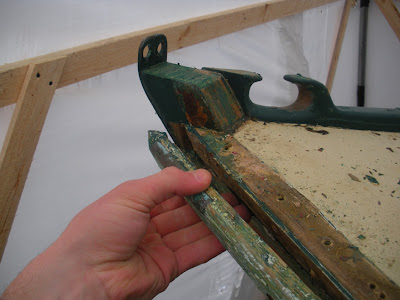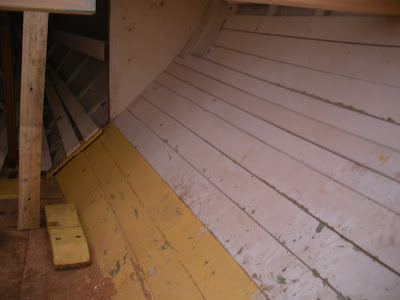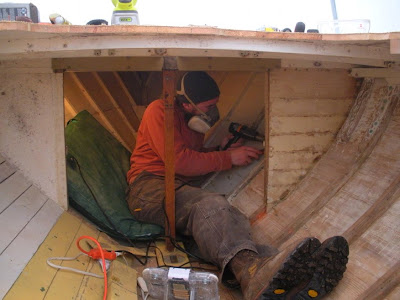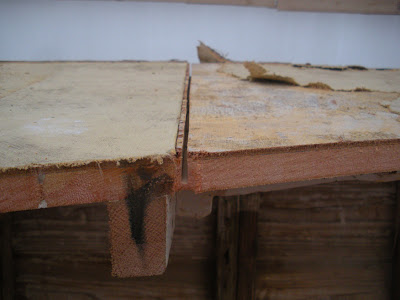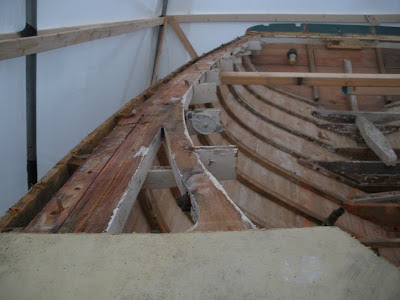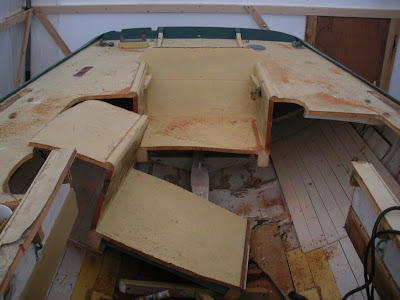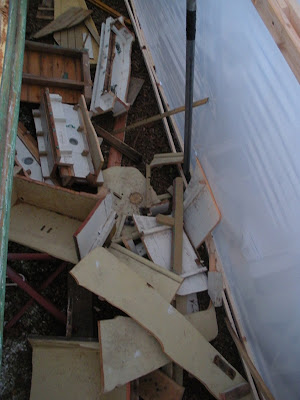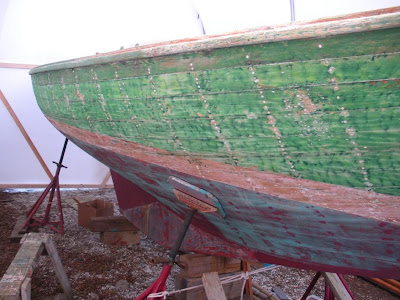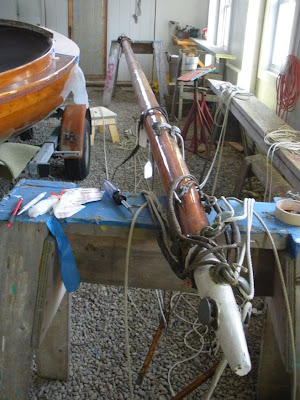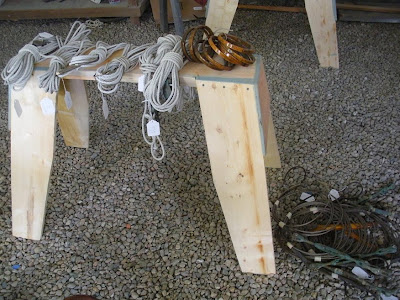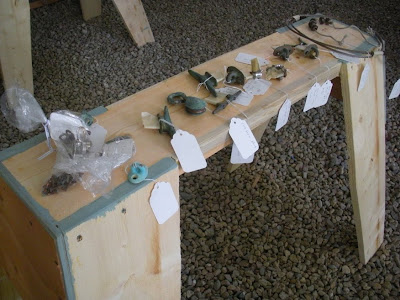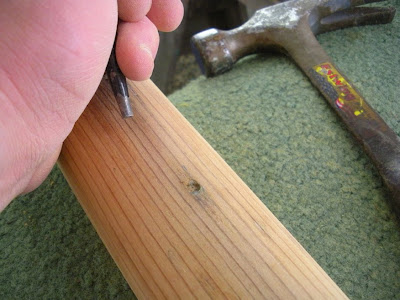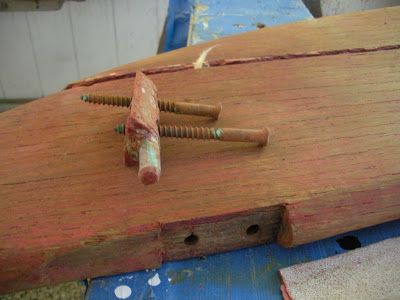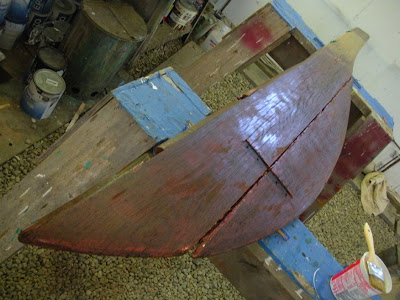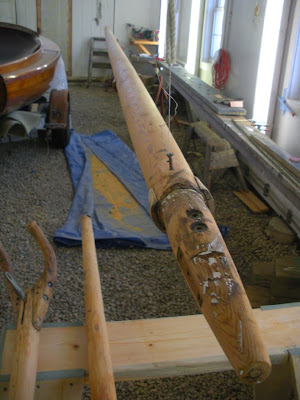Inbetween sanding and coating the masts, I finished sanding inbetween all the frames, floor timbers, keelson, deck beams, and the underside of the deck in the forepeak. I got my fingers in the tightest places I could and all the way forward that I could muster. This warranted many days of picking out paint chips and dust from my eyes. It felt good to get the sanding finished, and im trying to hold on on sealing it as long as I can and try to get some rebuilding done. With the sanding finished, I sat down in the bow with my pad and pen and recorded every problem I could find that needs fixing. My list in a page and a half long.
I started by pulling out the rotten floor timber at station six, and chiseling out the rotten frame heels. The frames are in good shape from about 10 inches out of the keelson to the shear, so thats where I cut them and new heels will be scarfed in to slightly larger specs for added sturdiness. The old fasteners mostly had to be removed from the inside using vice grips to twist them out or a hammer to bang them out. A new floor timber was cut from 1" thick white oak as well as a new frame heel for the STBD side, but these are not in place yet. There is still some shaping to be done.
As a final duty to the week, I installed two new 1/4"x2" bronze machine screws into each forward chain plate. These were loose before, but are now as sturdy and tight as anything, and it will be reassuring when sailing to look under the deck and see those 1/2" bronze nuts.

